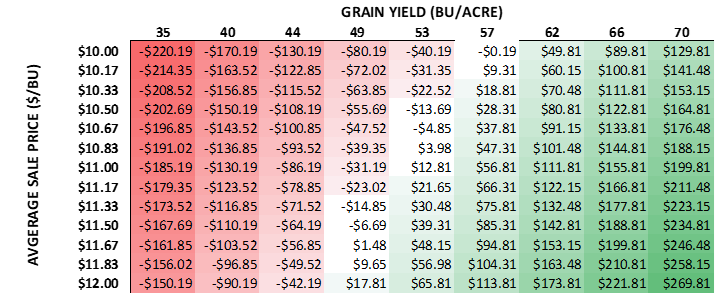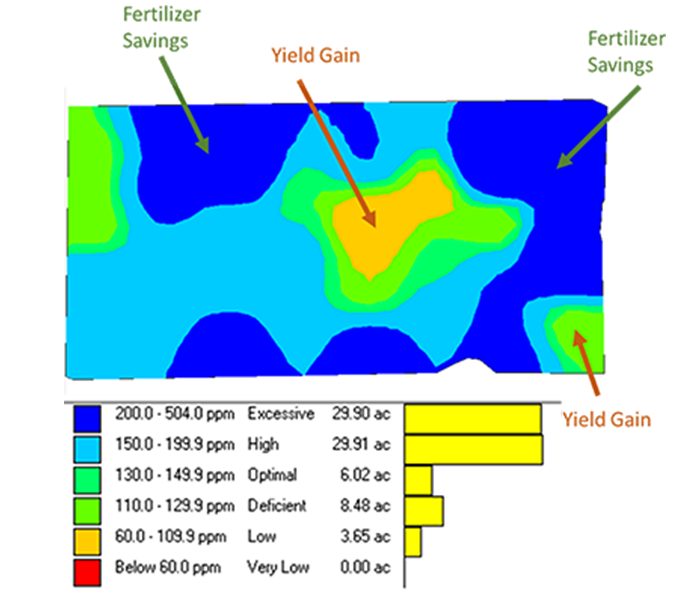Crunch the numbers.
Every year crop input planning and budgeting are important but with the abnormal fluctuation in the prices of your inputs, they are now more important than ever. The Premier Cooperative Team has the tools to work through your budget spreadsheets with you and calculate your breakeven cost per bushel. This will help you develop a crop input plan to meet or exceed your profit goals.
Below is an example of a chart for soybean inputs and the price per bushel to get to breakeven numbers. This is only an example and we can customize it for your input and price options. As you can see, if you increase your yield to 60 bushels per acre or greater it produces a nice return on investment. We encourage you to reach out to your Premier Agronomist today to crunch the numbers for your farming operation.




